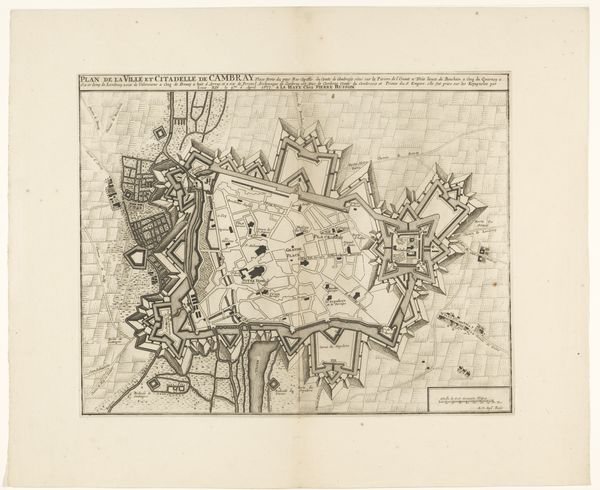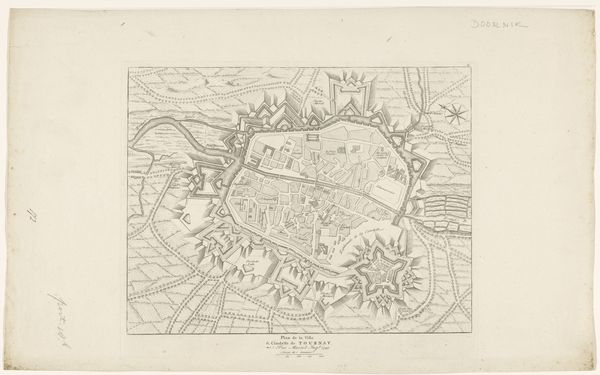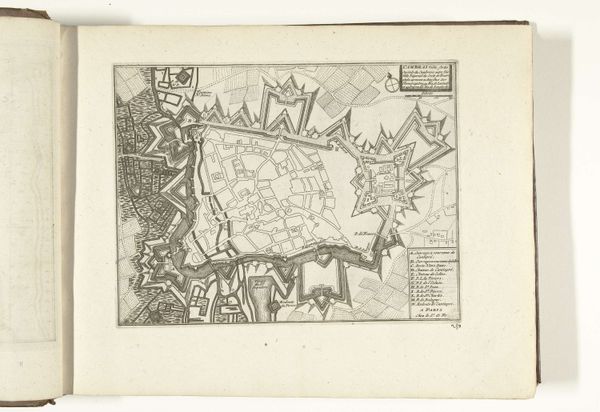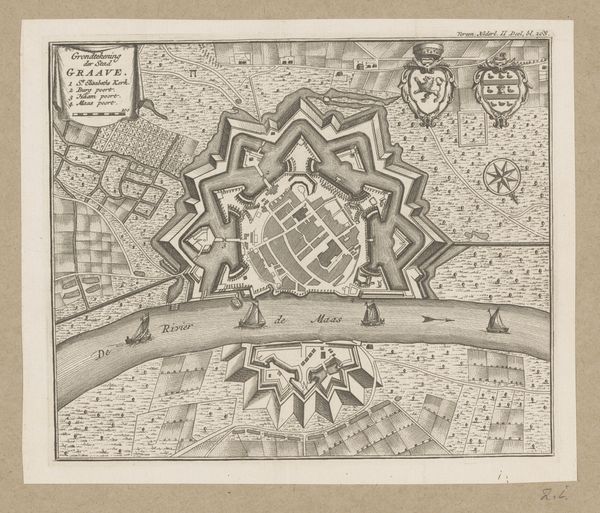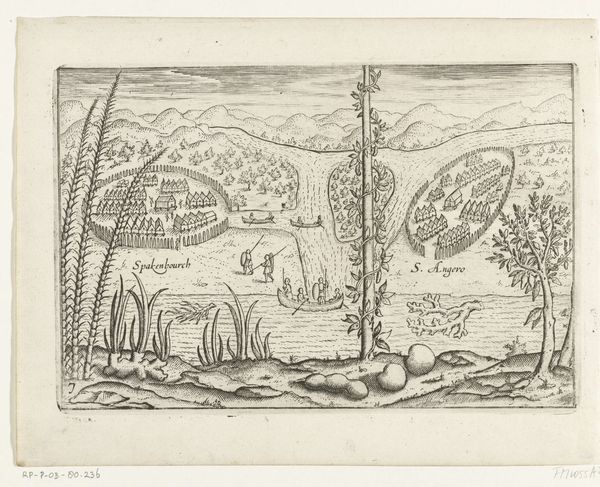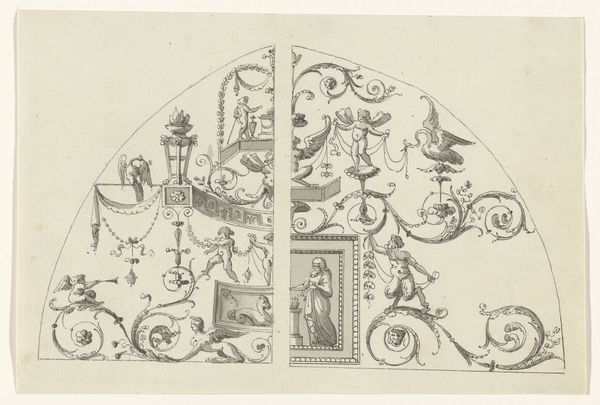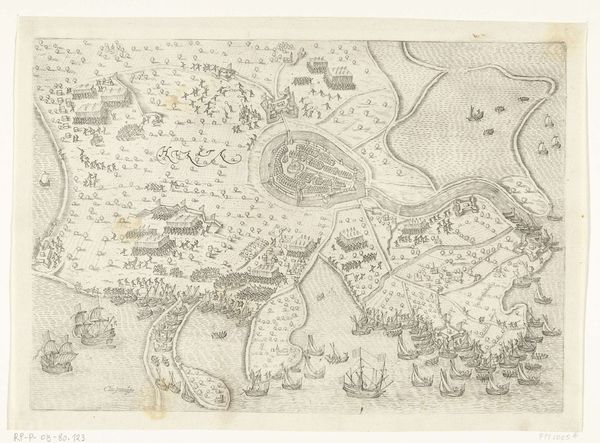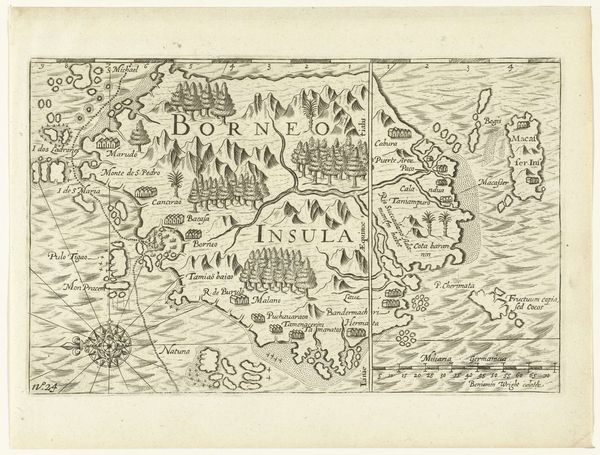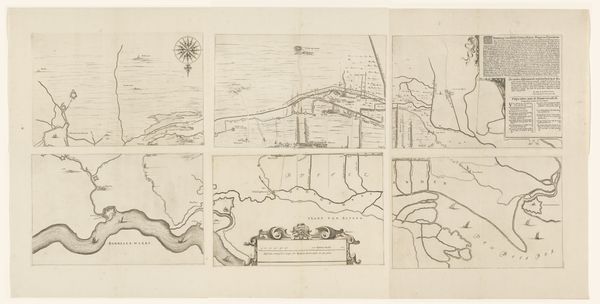
print, engraving
# print
#
asian-art
#
geometric
#
engraving
Dimensions: height 145 mm, width 220 mm
Copyright: Rijks Museum: Open Domain
This map of Bali was made in 1597 by an anonymous artist, and it offers more than just geographical data; it presents us with a symbolic dialogue between cultures. Dominating the image are the compass roses, navigational tools turned into emblems of exploration. They recall the ancient Roman concept of "Rota Fortunae," or the Wheel of Fortune, symbolizing the unpredictability of fate and the shifting winds of fortune that guided sailors across uncharted waters. Note how these symbols are placed on the edges of the world, in a similar way as they appear in other maps across time. Above Bali's landmass are depictions of temples, symbols that function as a bridge between the earthly and the divine. These structures aren't merely architectural; they are cultural keystones. The symbols, like seeds carried by the wind, reappear in different contexts, evolving yet retaining an essence of their original power. Such imagery touches upon our collective memory, stirring a deep, subconscious recognition of humanity’s quest to map not just the earth, but our place within the cosmos.
Comments
No comments
Be the first to comment and join the conversation on the ultimate creative platform.
